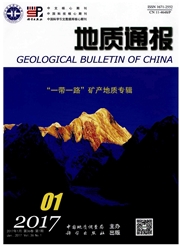

 中文摘要:
中文摘要:
对珠江流域11个测站的河水1个水文年4次取样进行水化学和同位素测试分析,揭示无论是碳酸盐岩区还是硅酸盐岩区,岩石风化均使河流的离子成分以HCO3^-、Ca^2+、Mg^2+为主,碳酸盐岩风化溶蚀速率和由碳酸盐岩风化溶蚀引起的大气CO2消耗量分别为27.60 mm/ka和540.21×10^3mol/(km^2·a^-1),是硅酸盐岩风化速率和由硅酸盐岩风化引起的大气CO2消耗量的10.8倍和6.7倍,说明碳酸盐岩风化是流域碳汇过程及效应的主体。由于有利的水热条件和高的碳酸盐岩面积比例,珠江流域平均岩石风化速率和由岩石风化作用引起的大气CO2消耗量分别为30.15mm/ka和620.36×10^3mol/(km^2·a^-1),为全球60条河流平均值的2.6倍。
 英文摘要:
英文摘要:
The chemical and strontium isotopic analytical results of water samples collected four times one year from the eleven sta- tions of the Pearl River showed that, with the rock chemical weathering of either carbonate rocks or silicate rocks, HCO3^- , Ca^2+ and Mg^2+ become the main ionic compositions of the river. The river ion stoichiometric and flux calculation shows that the carbonate rock weathering rate and atmospheric CO2 consumption are 27.60mm/ka and 540.21 × 10^3mol/(km^2· a ^-1) respectively, which are 10.8 and 6.7 times the silicate rock weathering rate and atmospheric CO2 consumption respectively, so the carbonate rocks are the main rocks of the chemical weathering and atmospheric CO2 sink in the basin. With the favorable climatic conditions and high carbonate rock ratio of the basin, the mean rock weathering rate and atmospheric CO2 consumption in the Pearl River Basin can reach 30.15 mm/ka and 620.36× 10^3mol/(km^2·a^-1) respectively. The atmospheric CO2 consumption value is about 2.6 times the average value of the 60 rivers in the world.
 同期刊论文项目
同期刊论文项目
 同项目期刊论文
同项目期刊论文
 期刊信息
期刊信息
